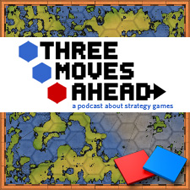At this week’s GDC, Gas Powered Games boss Chris Taylor told Greg Tito of The Escapist that Supreme Commander 2 was one of the best games he’d ever worked on. (I’m still working my way through the campaign, but I’ll let you know if I agree with him soon.)
He also said that SupCom2 was a top notch “large-scale RTS”.
It’s really leading the way in large scale RTS. I’ve never actually said those words before now, which is really odd, because you’d think it’d be the first thing out of my mouth when I was launching the first Supreme Commander. There’s small scale and large scale RTS, and we’re on the large scale side of things.
Though I’ve often talked about how the RTS is becoming smaller and more streamlined, I’d never really thought to distinguish the genre in terms of how big its scale is. And, of course, no RTS really has the scale of the Supreme Commander/Total Annihilation games. Taylor makes a comparison between the size of SupCom and the masses of armies we see in Hollywood blockbusters (though his choices for movie comparisons are odd because none of them really show huge engagements on any super scale. Happily for me, all ancients themed movies, though.)
As kids when we played in the sandbox, we may have only had 25 plastic soldiers, but we imagined 25,000. This is where large scale RTS plugs into the psyche of the gamer
So, for Taylor, a large scale RTS is making manifest all those childhood dreams of huge clashes of arms. The movie analogy isn’t a bad one for Supreme Commander. Though Spartacus had to use real men, it is relatively trivial to paint ten thousand CGI soldiers storming the beaches of Troy. Likewise, SupCom’s lack of a meaningful population cap makes it trivial to assemble hundreds of units for your army. You can churn out tanks like candy if you have the mass and energy, and resources are infinite.
The price, of course, for having almost unlimited manpower is that your armies become cannon fodder. Playing Supreme Commander 2 sometimes feels like playing a General Haig simulation – storm into enemy defenses to wear them down while you prepare your big strike because, after all, there’s an unending supply. This doesn’t work so well in the skirmish game, but the campaign maps have little sense of urgency or conservation, at least in the first third of the game. So I’ve picked up a lot of bad habits, I’m sure.
One reason I’ve never really warmed to the technically impressive SupCom/TA games is that the scale is so large that it does detract from that sense that every unit I have is important. Intimacy is probably the wrong word here, since I never feel all that close to my snipers in Company of Heroes. But one of the perils of relying on scale to make your statement is that this scale has to somehow be made relevant to the player once they get past the “Look how big this is!” thing. Ironically, the large the scale of battles, the more work a designer has to do to give the player a reason to play beyond “Go win”.
Let’s return to Taylor’s Hollywood movie comparison. Most large battle scenes are on screen for less than a minute. You get a big panning shot or something. And these battles are tied to characters or situations that we are asked to have a connection to – a hero, a pivotal historical event, the world in the balance. Peter Jackson’s Helm’s Deep worked because the stakes were so high for characters we’d grown to like (except for Rhys-Davies’ Gimli. Ugh.). The large scale was representative of the importance of the battle, of the odds that our heroes faced. Homer’s catalog of ships in The Iliad is similarly there to underscore the size of the Argive operation against Troy even as his story focuses on the leaders.
Strategy games don’t expect you to make these same sorts of connections, but they are there. When Gary Grigsby does one of his huge wargames, he’s counting on us to appreciate the size of the effort it took to defeat Japan in the Pacific or for the Soviets to roll back the Germans.
A year ago, I wrote about how so many people misunderstand what it means for something to be “epic”. SupCom 2‘s campaign is, so far, attempting to be a real epic about a real character with real issues leading hordes of robots into battle. Well, not lead, exactly. One problem with the SupCom 2 campaign as an epic is that your hero in his ACU will spend the first three quarters of the battle back at home base building stuff. It remains to be seen if GPG can build that link between me and the hero(es) and this army of whatever that thing I just made is.


